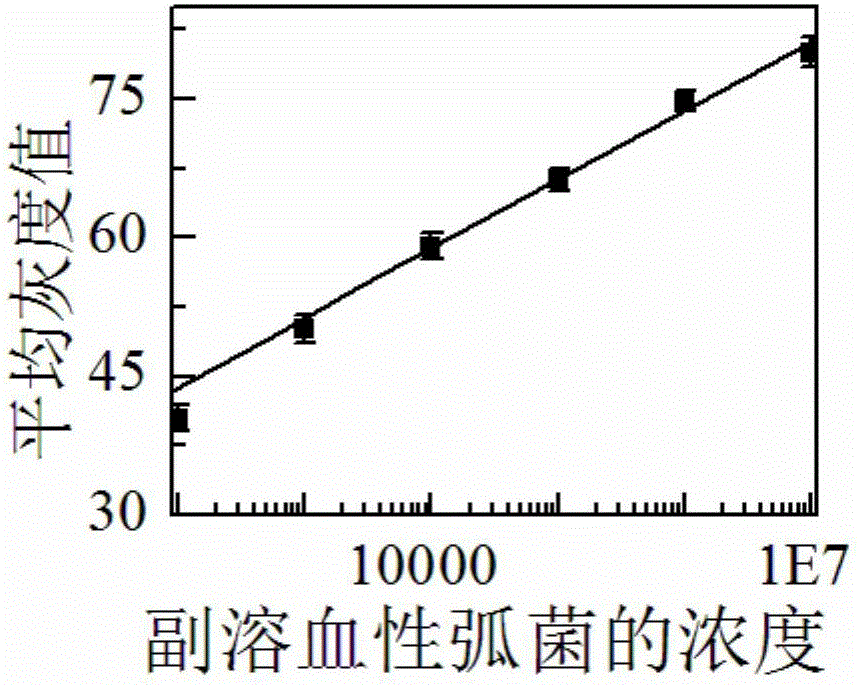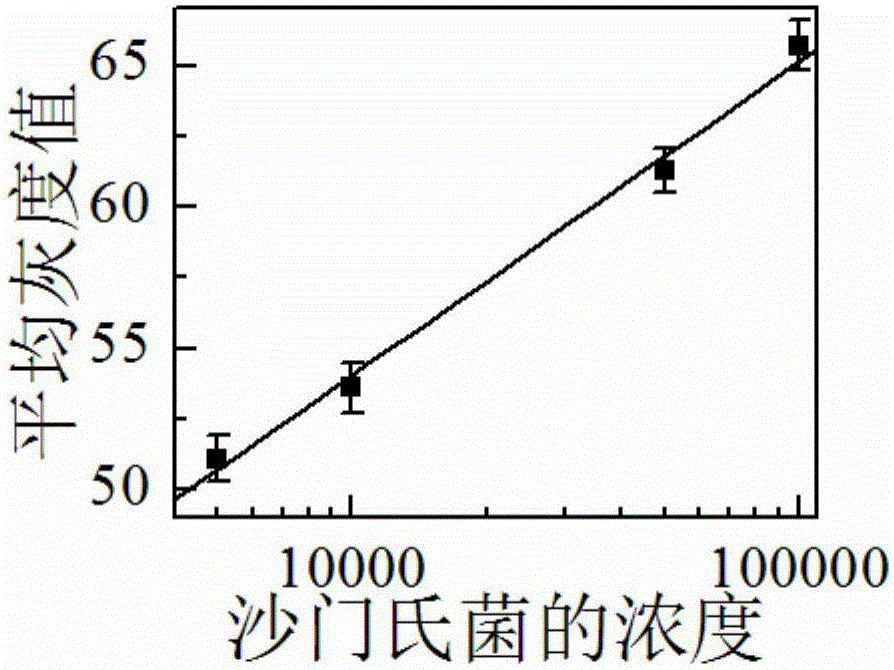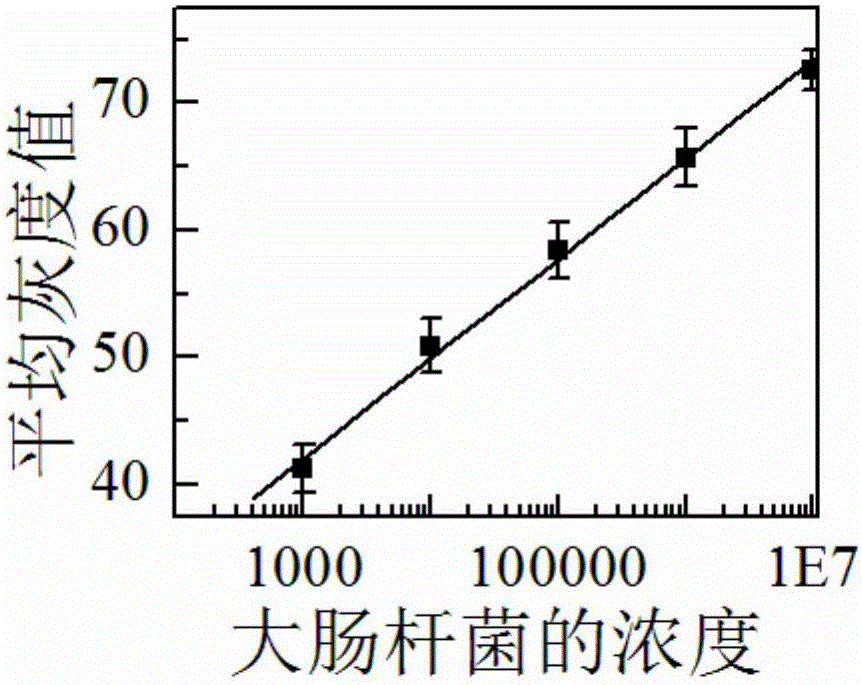Preparation method and application of food-borne pathogen immunosensor based on gold label silver stain signal amplification technology
A food-borne pathogenic bacteria, immune sensor technology, applied in the direction of instruments, scientific instruments, measuring devices, etc., to achieve the effect of high sensitivity
- Summary
- Abstract
- Description
- Claims
- Application Information
AI Technical Summary
Problems solved by technology
Method used
Image
Examples
specific Embodiment 1
[0033] A method for preparing an immune sensor for food-borne pathogenic bacteria based on gold-labeled silver staining signal amplification technology, specifically comprising the following steps:
[0034] (1) Silanization of glass slides
[0035] Place the glass slide in piranha washing solution, heat it at 90-100 °C for 20-40 min, take it out, wash it three times with distilled water, and place it under N 2 After drying in the atmosphere, immerse in a silylating agent for silanization treatment at room temperature for 2-6 h, then wash with ethanol, and vacuum-dry at 110-130 °C for 1-3 h to obtain a silanized glass slide;
[0036] (2) Multifunctional carbon nitride material (Au@g-C 3 N 4 ) preparation method
[0037] a. Heat melamine at 500-600 °C for 3-5 h, and dry it in vacuum to obtain carbon nitride (g-C 3 N 4 ) powder; take 0.8-1.5 g of carbon nitride powder and add it to 80-120 mL of 4-6 mol / L HNO 3 solution, refluxed at 120-150 °C for 24-48 h, cooled naturally t...
specific Embodiment 2
[0045] The method for detecting food-borne pathogenic bacteria using the food-borne pathogenic bacteria immune sensor based on the gold-labeled silver staining signal amplification technology prepared in the above-mentioned specific example 1, the sample of the above-mentioned food-borne pathogenic bacteria immune sensor is placed on the Add 3-5 uL of silver staining reagent dropwise, react in the dark at room temperature for 10-15 min, wash off excess silver staining reagent with ultrapure water, and then dry in air, and dry the gold-labeled silver-stained sample on the glass slide Scan the point into a picture to obtain the gold-labeled silver-stained signal and its gray value average of the sample solution to be tested. According to the quantitative relationship between the gold-labeled silver-stained signal gray value and the concentration of the food-borne pathogenic bacteria solution, calculate the Measure the accurate concentration of foodborne pathogenic bacteria in the...
specific Embodiment 3
[0046] The preparation and detection application of the Vibrio parahaemolyticus immunosensor based on the gold-labeled silver staining signal amplification technology specifically includes the following steps:
[0047] (1) Silanization of glass slides
[0048] The slides were placed in piranha washing solution (obtained by mixing 98% concentrated sulfuric acid and 30% hydrogen peroxide at a volume ratio of 7:3), heated at 95 °C for 30 min, removed, washed three times with distilled water, and placed in N 2 After drying in the atmosphere, immerse in a silylating agent for silanization treatment at room temperature for 2-6 hours, then wash with ethanol, and vacuum-dry at 120 °C for 2 hours to obtain a silanized glass slide;
[0049] (2) Preparation method of multifunctional carbon nitride material
[0050] a. Heat melamine at 550 °C for 4 h and dry it in vacuum to obtain carbon nitride powder; add 1.2 g of carbon nitride powder to 100 mL 5 mol / L HNO 3 solution, refluxed at 135...
PUM
| Property | Measurement | Unit |
|---|---|---|
| recovery rate | aaaaa | aaaaa |
Abstract
Description
Claims
Application Information
 Login to View More
Login to View More - R&D
- Intellectual Property
- Life Sciences
- Materials
- Tech Scout
- Unparalleled Data Quality
- Higher Quality Content
- 60% Fewer Hallucinations
Browse by: Latest US Patents, China's latest patents, Technical Efficacy Thesaurus, Application Domain, Technology Topic, Popular Technical Reports.
© 2025 PatSnap. All rights reserved.Legal|Privacy policy|Modern Slavery Act Transparency Statement|Sitemap|About US| Contact US: help@patsnap.com



